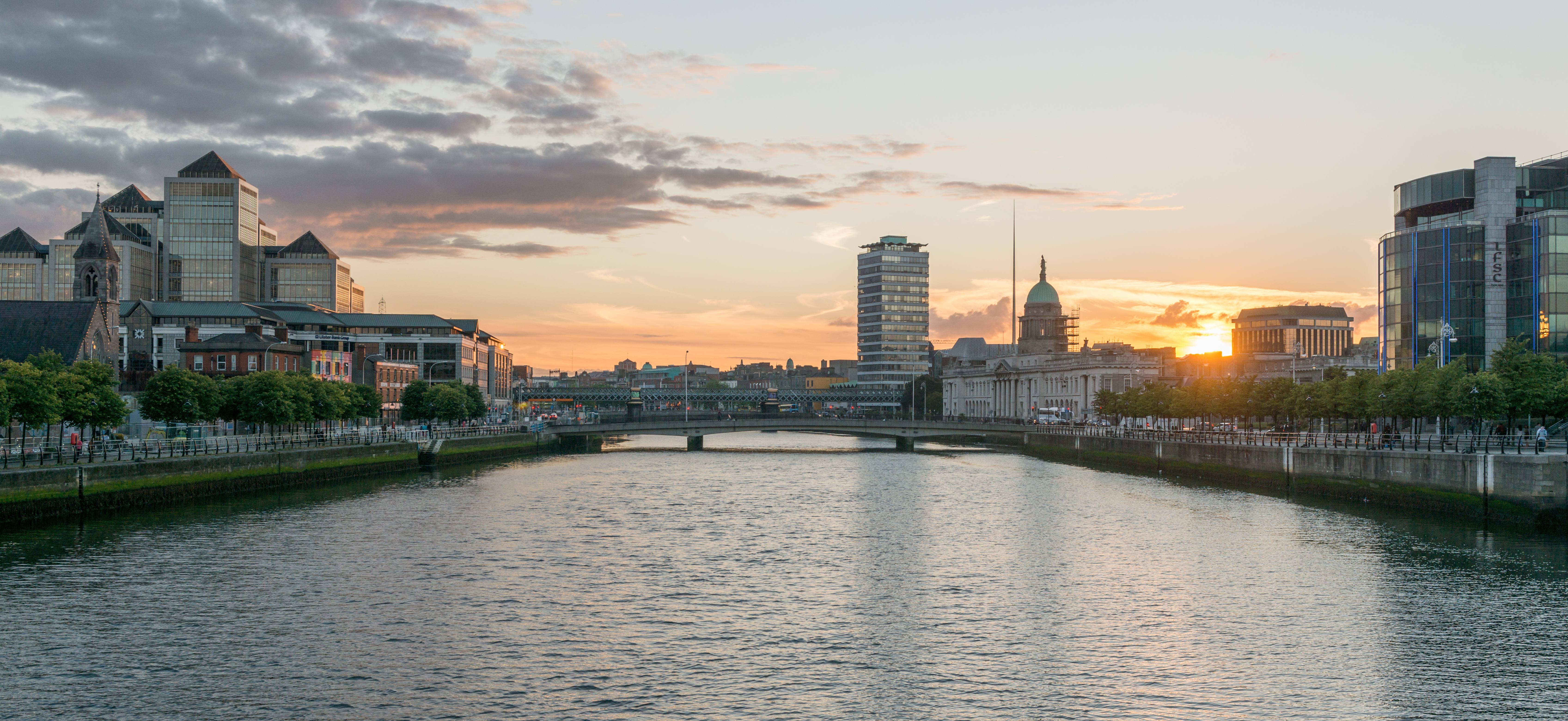On Wednesday May 18, in front of 12-14 Eden Quay, also known as Connolly House, amongst republican songs and fiery speeches, an official statement was read out by representatives of the Revolutionary Workers Union Council (RWUC). They announced their intention to fight any attempt by the authorities to take back the building and their acquisition of a second building, the location of which has not been released, to be named Liam Mellows House, after the anti-treaty socialist republican. Despite the contrasting anarchist and Marxist flags of the crowd, they seemed to be in perfect agreement in their support for the occupation.
The ideological objectives of the group were set out in stone: “The Revolutionary Workers Union is a pro-refugee and migrant organisation. We believe in housing for refugees and migrants along with all the people in Ireland, and we once again call for the end of the shameful prison system of direct provision.”
“There are enough empty homes and buildings in Ireland to house all the people regardless of nationality, ethnicity, race, religion or sexual orientation or whether someone is born in Ireland, Iraq, Afghanistan, Syria, Ukraine or Somalia, and we demand and will continue to fight for housing for all the people now.”
The speakers insisted upon their right to occupy unused buildings, challenging the idea that courts are arbitrators of right and wrong. The RWUC is engaged in an ongoing court battle with the Salvation Army over property rights. The Salvation Army has a long leasehold interest in the property and claims that it intends to use the building, a former youth hostel, to house Ukrainian refugees. The activists, who want to use the building to house refugees and other people in need, pointed to the fact that the building was left in a state of disrepair for a number of months with a leaking roof, which was fixed by volunteers. While the crowd seemed hopeful about the RWUC’s legal prospect, they also accepted that this legal pursuit may fail.
Echoing the historical anti-landlord campaigns by republicans during the Land War, activists expressed their hopes of the occupation of James Connolly House being the start of a much larger movement: “This is the start of a militant, working class led, all-Ireland housing movement that when built across the country can and will break landlordism, defeat the housing vultures and deliver housing before the people.”
Inside Connolly House, the building was immaculately clean. Signs were put up reminding people to clean up after themselves. Visitors had to sign in and out of the building, and it was stressed that as the building was first and foremost an occupied home, with no photography allowed. The starry plough, a flag originally used by James Connolly’s Irish Citizen Army, featured prominently in many parts of the building. Down a hallway decorated with portraits of the communist leaders Marx, Lenin, and Mao was the common room. Seán, a member of the RWUC, spoke to Trinity News.
Discussing the reasoning behind this campaign, Seán emphasised the large number of long-term vacant properties in Ireland, underlying the fact that they renamed the building to James Connolly House “as we had a sense of social justice”.
Emphasising that this was not a one-off project, he mentioned the group’s acquisition of a second property to be renamed Liam Mellows House, stating: “We have no hesitation in passing acquisition orders like this. Unfortunately, it’s the state that should have been passing acquisition orders many years ago on vacant properties and housing, but with their protection of property, the marketplace, unfortunately, as time progressed, it is obvious even to the most dim-witted people that people are not their priority”.
“It’s like, say, James Connolly. Was he just concerned about the shop floor and the wages you got? People are being turned into mortgage slaves due to speculators, due to land banks. Now imagine if there was a state bank, run as a non-profit?”
In response to the ongoing court case on the future of the building, Seán said, “My personal view is I have seen war-torn places, I’ve seen people coming in on boats that no one wanted to let in and I’ve seen people drown. We see that when major players decide to play their chess game, ordinary people suffer. But I see that a life in Ukraine is the same as a life in Palestine, it’s the same as the catastrophe unfolding in Yemen. I do not see any human life in any part of the world being more precious than any other life. That’s perfectly simple.”
He also questioned the Salvation Army’s intentions, however stating that the group would not get bogged down in legal issues and technicalities, emphasising the fact that the building was left in a state of disrepair for a number of months: “The Salvation Army wants to be selective while this place stood empty for 15 months with a leaking roof. If your house had a leaking roof, you would attend to it immediately even if you were going to lock it up, you wouldn’t allow it to continue.”
He anticipated that the state would have a heavy-handed approach to this campaign in the future, alluding to the RWC’s leaderless structure: “It’s possible that they might think it’s one or two individuals. Remove them and the whole thing will fall apart.” The group as a whole seemed hopeful that their campaign would have a meaningful impact on the housing situation in Ireland, despite the legal trouble they were in.
Perhaps a culmination of dissatisfaction around the housing crisis in Ireland, this campaign and its slogan, “House all the people of Ireland” is significant in itself. While it is possible that it will not end in success, the views of the activists inside Connolly House present an opposition to the far-right anti-refugee narrative as well as the government narrative which favours certain refugees over others.






